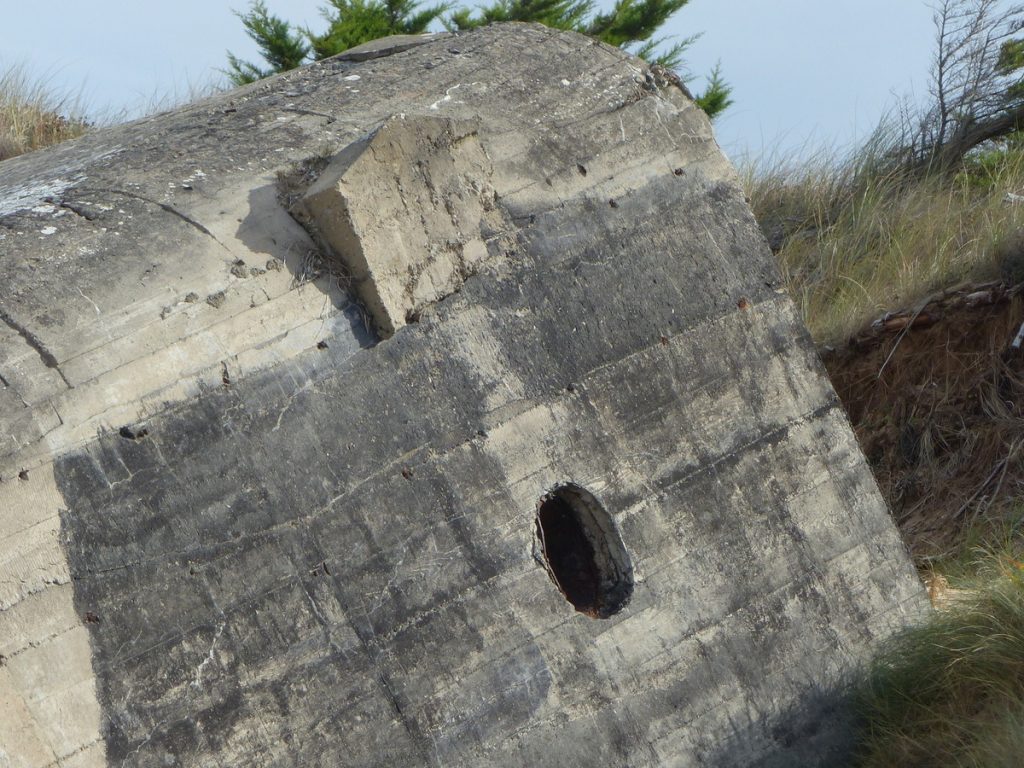The island’s blockhouses

The blockhouses, remains of the Atlantic Wall
From Rivedoux-Plage in the south to Saint-Clément-des-Baleines in the north, the island is home to many remains of the Atlantic Wall built by the Germans during the Second World War. Nearly 300 bunkers, blockhouses and pillboxes were erected on the coastline, some still visible, others half buried in the sand or overgrown by vegetation.
A brief history…
Built by the German army to deter any attempt at an Allied landing from Britain, the Atlantic Wall is a series of powerful coastal fortifications running along the Atlantic coast for nearly 5,000 km, from northern Norway to southern France. Between 1942 and 1944, the Todt Organization – Nazi Germany’s civil and military engineering group – built nearly 300 bunkers, pillboxes, artillery batteries and radar stations on the Île de Ré. Objective: to defend La Rochelle submarine base and prevent any air or sea landing on the continent. Each position had a female German name (Kora, Karola, Fanny, Herta, Lola…).
The Kora-Karola artillery batteries at Ars-en-Ré
In Ars-en-Ré, the two coastal batteries of Kora-Karola are still visible in the Combe à l’Eau forest. At the heart of a 40-hectare military complex, it is the largest facility built on the island, with a 23-metre-high concrete tower and two 203 mm batteries.
The Fanny and Herta positions, Bois-Plage-en-Ré
On the dunes of Bois-Plage, you can discover the coastal batteries Fanny and Herta, the most important artillery position after Kora-Karola. This is where the island’s general command post was located. They were each armed with a 150 mm gun. A secondary observatory served as a watchtower, while a searchlight swept the channel at night.
The Sablanceaux battery
At the entrance to the island, the Sablanceaux Redoubt, built by Vauban in 1674, was occupied by the Germans. The latter included an observation blockhouse in the southern guardhouse, as well as two anti-aircraft guns.
The fort of La Prée
Leaving Rivedoux, on the road to La Flotte, the Reich army took over the La Prée fort in 1942 and built the Berta battery in it: an observation blockhouse and a telecommunication blockhouse to monitor the harbour of La Rochelle.
The Martray Redoubt
In Ars-en-Ré, the Germans transformed the Martray Redoubt, another stronghold built by Vauban in the seventeenth century, into an infantry support point, code-named “Ilse”. In 1942, German engineers installed a double pillbox, armed with an anti-tank gun and an MG machine gun, to watch over the cove and the beach of Martray.
Until the surrender of Germany on 8 May 1945, this link in the Atlantic Wall was never attacked or bombed. These blockhouses have remained intact for over 80 years. Some blockhouses were less fortunate. To protect the dunes and the forest, the municipality had to destroy four blockhouses on the beach of Saint-Clément-des-Baleines in 2016. They were used as a backdrop for the film “The Longest Day”, recounting the D-Day landings on Omaha Beach. Other bunkers have found a more imaginative use: they have been rehabilitated and families now live in them.





